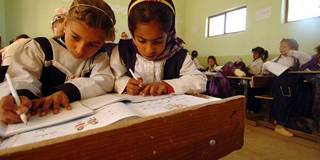The international community has been pledging to attain universal primary education since the 1960s, and it is doing so again by including this target in the Sustainable Development Goals. But, unless new resources are made available, the world is likely to fail yet again.
COLLEGE PARK, MARYLAND – This month, the United Nations is expected to adopt the Sustainable Development Goals, 17 goals and 169 targets that will guide international development efforts over the next 15 years. The objectives are ambitious; they include efforts to end hunger and poverty, reduce economic inequality, achieve gender equity, combat climate change, promote sustainable development, and improve infrastructure, sanitation, health, and education. And yet, if the efforts covered by this last goal – education – are any guide, it will take more than promises to ensure that the SDGs are achieved.
Two of the eight Millennium Development Goals (MDGs) – the global framework that preceded the SDGs – targeted education. One was to attain universal primary education (UPE) and the other to reach gender parity in enrollment. Neither was achieved by the target date of 2015.
The history of broken promises goes back much further. Attaining UPE has been pledged by participants at international conferences since the 1960s, and both goals were part of the 155-country Education for All (EFA) compact that was signed in 1990 with a target date of 2000. Midway through that decade, however, in a relatively secret process, these and other EFA goals were unceremoniously postponed until 2015.

COLLEGE PARK, MARYLAND – This month, the United Nations is expected to adopt the Sustainable Development Goals, 17 goals and 169 targets that will guide international development efforts over the next 15 years. The objectives are ambitious; they include efforts to end hunger and poverty, reduce economic inequality, achieve gender equity, combat climate change, promote sustainable development, and improve infrastructure, sanitation, health, and education. And yet, if the efforts covered by this last goal – education – are any guide, it will take more than promises to ensure that the SDGs are achieved.
Two of the eight Millennium Development Goals (MDGs) – the global framework that preceded the SDGs – targeted education. One was to attain universal primary education (UPE) and the other to reach gender parity in enrollment. Neither was achieved by the target date of 2015.
The history of broken promises goes back much further. Attaining UPE has been pledged by participants at international conferences since the 1960s, and both goals were part of the 155-country Education for All (EFA) compact that was signed in 1990 with a target date of 2000. Midway through that decade, however, in a relatively secret process, these and other EFA goals were unceremoniously postponed until 2015.